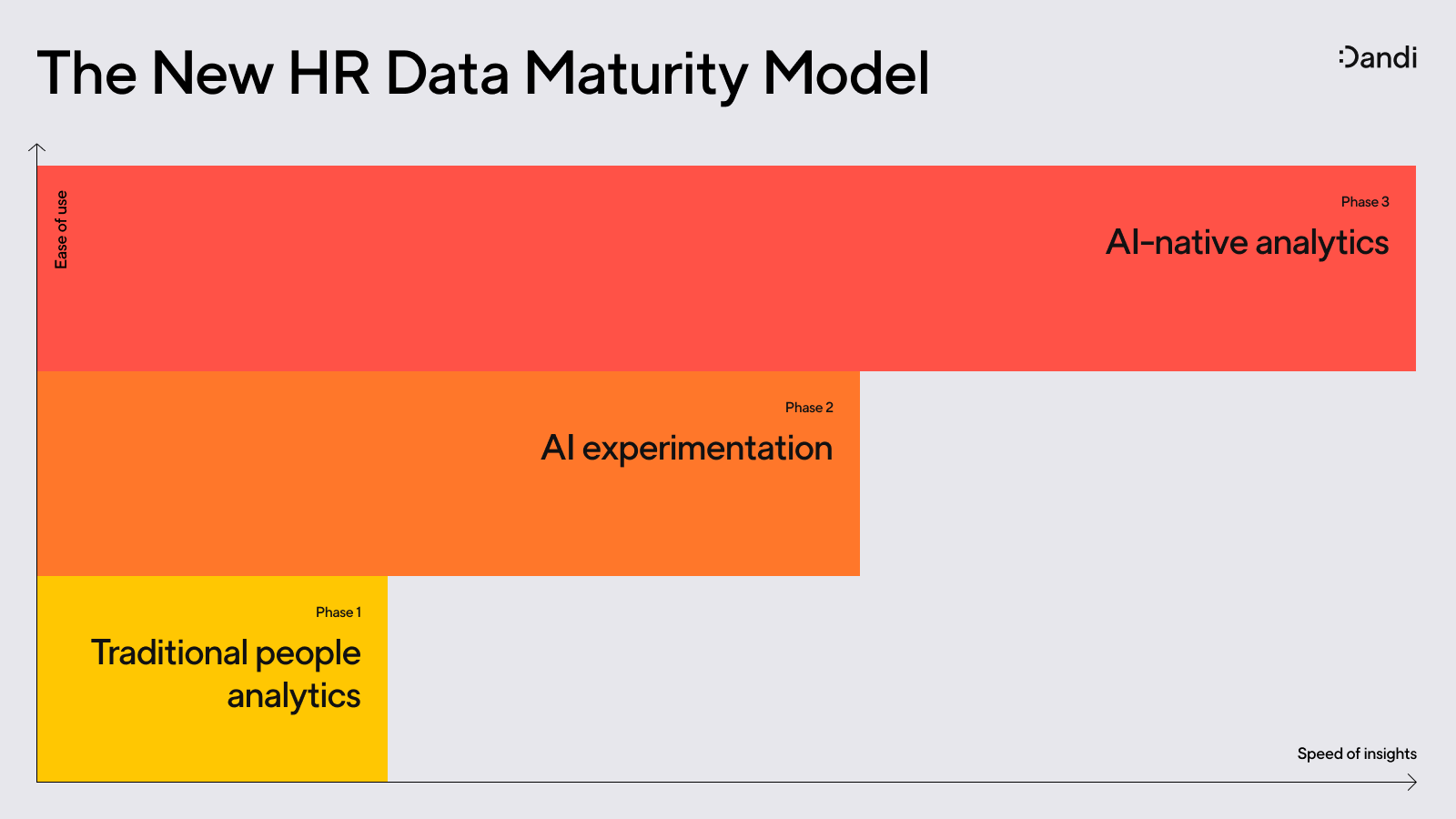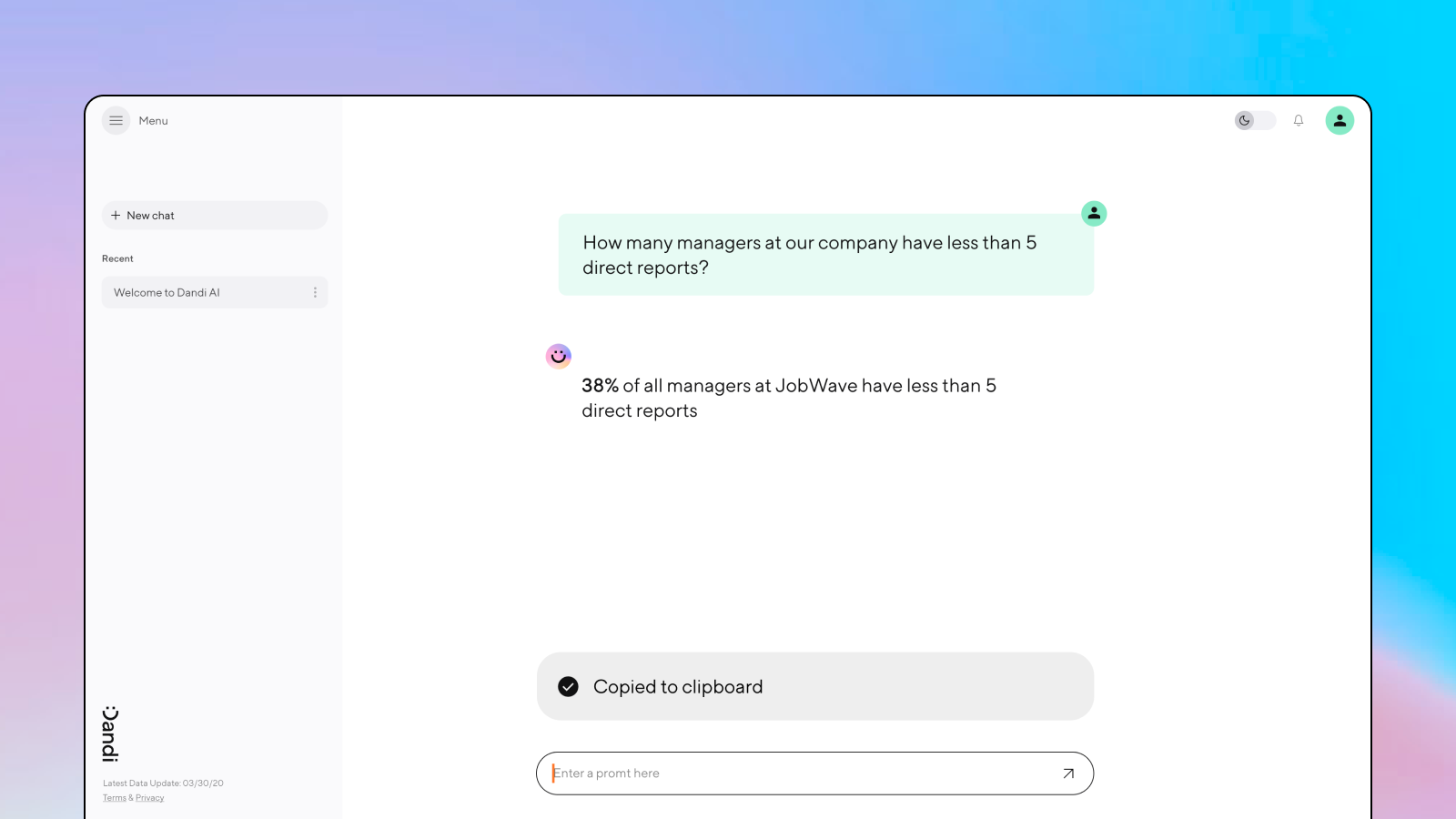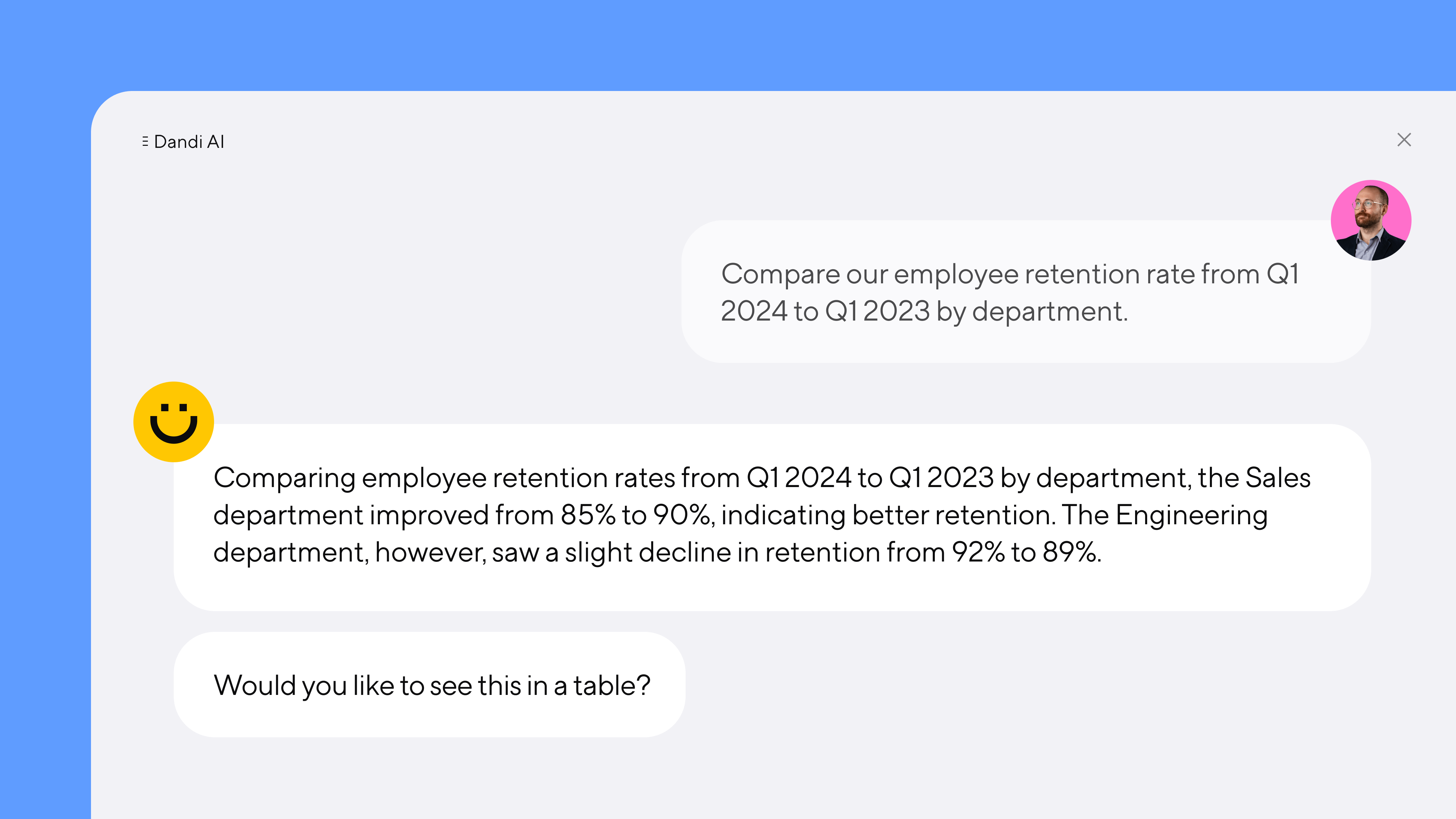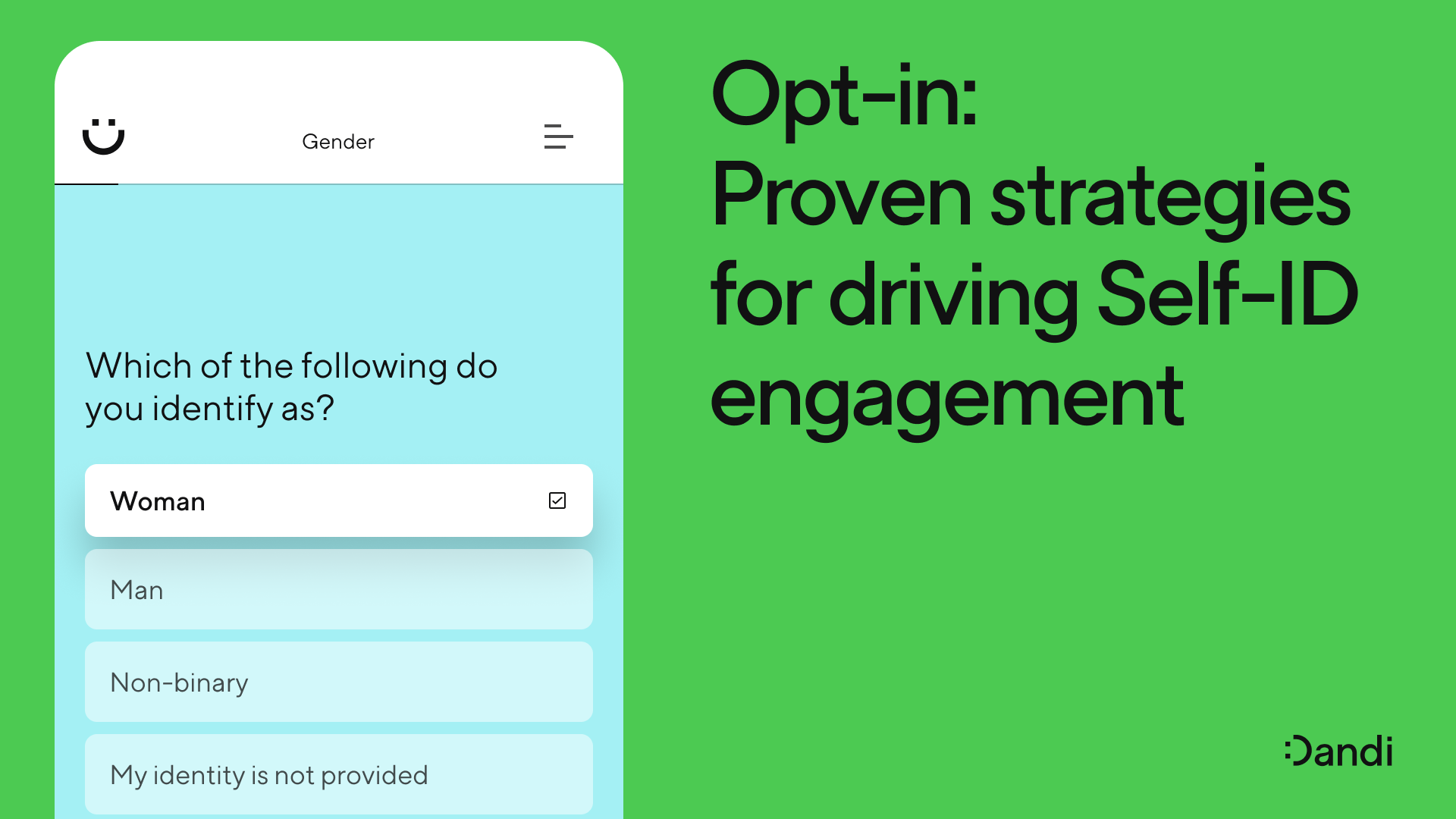DEI Journeys: What Jiun Kimm learned switching from teaching to tech

Camille Hogg, PhD – Apr 27th, 2023
DEI Journeys is an ongoing series highlighting the diverse career paths of leaders across the DEI space. Today, we're featuring Jiun Kimm, who translated deep experience in the non-profit and education sectors to global leadership roles in tech.
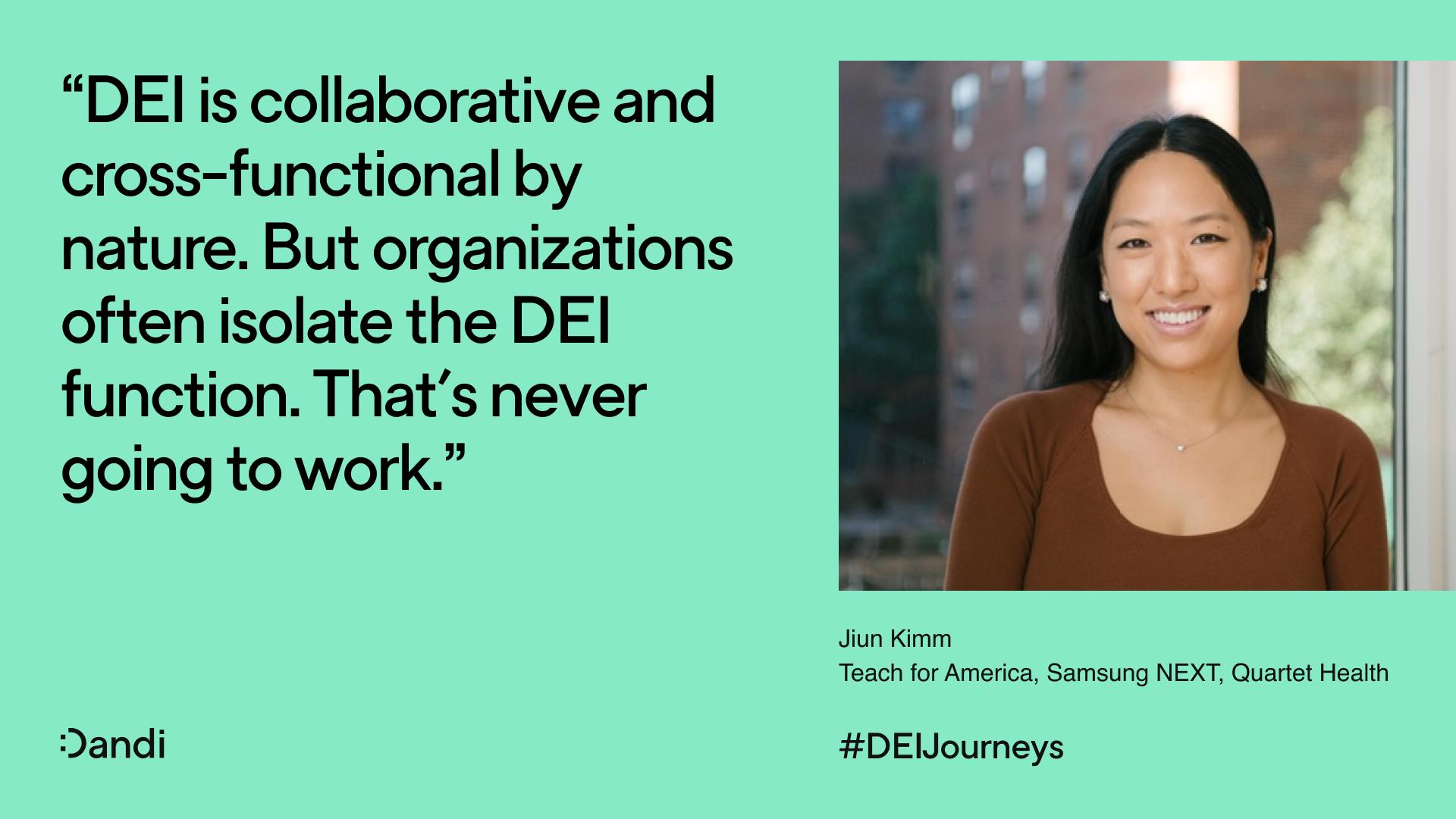
Jiun Kimm spent much of her early years feeling like she didn’t fit in. Her childhood, spent in rural Tennessee, was punctuated by others marking her—as she puts it in air quotes—as “different.”
“I’m the proud child of immigrants from South Korea,” she says. “I grew up in the rural south. I was often the only person who looked like me. My parents did everything they could to make sure we were connected to our culture. They’d drive four hours to the nearest Korean grocery store to rent us Korean movies, and to buy ingredients for the home-cooked Korean meals we’d have every day.
“What was really hard for me as a child was to reconcile the happiness and confidence I felt at home with how I felt when I was anywhere else,” Jiun adds. “I’d walk into school, and all of these parts of my identity that I loved so much were suddenly considered strange or made me the other.”
Jiun’s sense, even at a young age, that society was inherently unbalanced led her first into education, and then into tech. It was at a time when the conversation on workplace DEI was still in its infancy.
“All the Googles and Microsofts of the world started to see that greater employee diversity and representation could help them build better products and expand their reach,” Jiun says.
“But in many ways, even in this world of innovation, the education and non-profit spaces felt further ahead—they were focused on creating better outcomes for people, not products, and that north star enabled them to have a laser-focused view on impact.”
Jiun’s biggest learning stepping into a DEI leadership role: Fighting to make space for DEI
After graduating college with a degree in economics, Jiun began working with non-profit Teach For America, working in schools in under-resourced and under-served communities.
“I’d personally attended so many schools where I’d never seen a teacher of color, let alone one that looked like me,” she says.
“As a Teach For America corps member, I was an Asian teacher, who make up roughly 2% of the US teaching force, teaching in a school in a Black community. Understanding and honoring the rich history, present lives, and futures of my students and their families and the importance of building lines of solidarity across our communities was my guiding principle as an educator.”
Jiun later became the organization’s Director of People and Ops, defining the strategy to ensure equity and inclusion were embedded in the team’s day-to-day operations. She soon realized that she wanted to make the same kind of impact in tech.
Being a strong data-driven leader and practitioner is key. It’s the only way to get executives to respond.
“Through education, I’d already been doing the DEI work, in a very on-the-ground, community-based way,” she says. “Research had already been around for decades showing that if you bring this culturally competent education into the classroom, students—particularly from underrepresented backgrounds—experience more positive life outcomes. And this conversation about equity and impact was starting to become more prominent in the tech space.”
In education, Jiun’s main purpose was fighting against a system that created barriers for children of color. But when she moved into tech, the fight and the barriers were entirely different.
“In the non-profit spaces in which I was working, it felt like time and intention were on our side. We were never working against revenue targets, so we could always be intentional and practiced. I rarely had to go to a leader and justify how DEI related to organizational goals—it was inherent in the work.
“But in tech, you don’t have that luxury of time or resources, even in the spaces that say they are committed to this work. You have to move fast to keep up like everyone else. And if you can’t show people that what you’re doing is working, especially because you’re not in a revenue-bearing role, you’re out.”
Jiun has had this conversation more than once throughout her career. It’s a fight, she says, that a lot of her peers have had, too.
“There’s always a point where leaders are restructuring or re-budgeting, and they don’t want to focus on DEI any more,” she says. “It’s a problem that’s so emblematic of this space, where a lot of companies take on this work without having a clear vision as to why it’s important or an understanding of what they’re truly taking on.
“Being a strong data-driven leader and practitioner is key in this fight,” Jiun adds. “It’s the only way to get executives to respond. Just like any other function, they want to see the data that tells them why and how the DEI work is going to support the business. You have to be able to show what will happen if DEI is prioritized—how it will impact your retention, your hiring, and ultimately a more impactful product or service. Because if you can’t marry intent with why DEI is good for the business, then it unfortunately just doesn’t work.”
Jiun says because we’re still operating in a system that does not fully understand DEI, getting DEI on the corporate agenda is always going to feel like an uphill battle, regardless of the type of company or culture you are in. But, she says, practitioners can do this more successfully by emphasizing DEI’s centrality to business success. This hinges on 3 key steps:
- Develop a strong business case for your particular company for DEI, both internally and externally. For example, consider how your DEI strategy will increase employee satisfaction and retention, or how it will extend the impact of your company’s product or service to serve more users or customers.
- Communicate your business case in a way that is differentiated for each team and individual to gain buy-in and support. A one-size-fits-all approach will not move each individual actor. Each person must understand the role they play, why it’s important for them, and how they can support.
- Leverage data in your communication. Use quantitative and qualitative data to tell a story that is evidence-based and can be tracked and measured effectively and routinely. Then, build a plan to ensure you are regularly collecting, analyzing, and reviewing data with the appropriate teams, team members, and leaders.
Jiun’s biggest success scaling DEI: Building community for underrepresented founders
After her first role in tech, Jiun found herself plunging into the venture capital world at Samsung’s in-house investment firm Samsung NEXT. As their first Global Head of DEI, she was brought in to work on the internal side of the company—the nuts and bolts of making Samsung NEXT more diverse and inclusive as an organization.
But she realized that to change the system in tech, something had to change in the way companies were built from the start. And that didn’t just mean investing in the companies of underrepresented founders, but investing in the founders themselves.
“I ended up working a lot with our investment team to develop the strategy of how we invested in underrepresented founders globally,” she explains. “We wanted to build communities of underrepresented founders in each of our regions. We started bringing them together for mentoring opportunities and events—we wanted to create an environment where they had a community that provided them with real support and understanding given the unique challenges they faced in a biased system.”
The community-building tactics I learned as a teacher in Harlem became essential to my role at Samsung.
For Jiun, community-building didn’t just mean helping people make the right connections that would bring them success. It also meant creating genuine relationships with underrepresented founders, and giving them a sense of belonging in what has always been a predominantly White space.
“We didn’t want our community to be some PR exercise to show everyone how many underrepresented founders we could invest in,” she says. “We wanted people to see that their particular work was important and had been overlooked for far too long.
The approach was inspired by Jiun’s days as a teacher.
“Teaching in Harlem, I got to know the neighborhood, the parents, the teachers, the restaurants, the local supermarket. Delving into the community meant I could work in a way that truly respected where people were coming from. I brought this same community- and relationship-building approach to Samsung.
“We, on the investor side, had to do the work of figuring out what was stopping us from seeing underrepresented founders as worthy as all of the other White male founders we were easily willing to invest in.”
Jiun’s one action that made the most impact: Creating open-source DEI resources
Creating systemic change, particularly in the ventures space, was never going to be the work of one person or one company alone. But Jiun knew that making progress depended on encouraging collaboration and knowledge-sharing.
“DEI is collaborative and cross-functional by nature,” Jiun says.
“But organizations and leaders often isolate the DEI function. Leaders hire practitioners with the greatest of intent, but often wash their hands after they get someone in the role. And unfortunately, a lot of DEI practitioners end up in roles where they’re just left to operate on their own, without being truly embedded in the broader corporate strategy. They’re held accountable to goals they can’t influence, without the structure or resources in place to meet them. That’s never going to work. It’s just window dressing.”
DEI is collaborative and cross-functional by nature. But organizations often isolate the DEI function. That’s never going to work.
As open roles for DEI practitioners began to surge following George Floyd’s murder, Jiun knew that to truly embed in future organizations to come, DEI needed to start much earlier. It also needed to be open to everyone, not just the organizations with the funding to prioritize it. She came up with the idea to build an open-source resource that was open to everyone.
“One of the most memorable things I’ve done in my career was to create an open-source toolkit for startups on DEI,” she says. “We wanted to share all of our thinking and best practices to continue to build the momentum around change in the industry. We shared it directly with startup founders to set them up from day one—we gave them everything they needed to create inclusion, understand equity, and how to build a diverse company.”
In the dollar-driven environment of venture capital where startup founders go toe-to-toe for funding, Jiun never wanted them to feel like they had to compete for DEI resources.
“The venture space can be very competitive—but we’re not in competition on DEI,” she says. “It’s too important. This work is only ever going to be impactful if we all work together to create systemic change across the entire industry. Ultimately, we all want to make change and build more equitable companies, and we should all be willing to share practices in order to make that happen. We shouldn’t be keeping secrets from one another. That doesn’t move us forward.”
When Jiun originally started in tech, the conversation on DEI still felt nascent. But amid countless layoffs in the space, Jiun’s hopes for change at that time are very different from the ones she has now. Her fears, though, have stayed very much the same.
“The questions we were trying to answer when we built our community and toolkit are still important,” she says. “We still need equity and representation for underrepresented people across the entire tech industry. But the conversation has changed so much since 2020. The industry is in a different place. We’re seeing that discussion falter.
“As I think about the future of the industry, we have to be able to move towards a future where leaders can answer why this work is important to them, and how to make it truly sustainable and embedded. I just don’t think those are the questions that were ever asked before as so many companies were just moving on trend.
“The thing I fear most is the industry experiencing another reactionary swing like we saw in the summer of 2020, and we, as organizations, are going to keep swinging across this pendulum back and forth, making no real impact, and at worst, regressing.
“We need to really start asking ourselves—where do we see this work going? What are we trying to solve for? Why is that important for our business and how do we embed it throughout? How do we honor underrepresented individuals and communities and put equity at the forefront in a way that isn't damaging? And most importantly, how do we build true long-term sustainability for DEI?
“That’s where we need to start right now.”
More from the blog
Announcing more powerful Dandi data visualizations
Team Dandi - Oct 23rd, 2024
The New Maturity Model for HR Data
Catherine Tansey - Sep 5th, 2024
Buyer’s Guide: AI for HR Data
Catherine Tansey - Jul 24th, 2024
Powerful people insights, 3X faster
Team Dandi - Jun 18th, 2024
Dandi Insights: In-Person vs. Remote
Catherine Tansey - Jun 10th, 2024
Introducing Dandi AI for HR Data
Team Dandi - May 22nd, 2024
5 essential talent and development dashboards
Catherine Tansey - May 1st, 2024
The people data compliance checklist
Catherine Tansey - Apr 17th, 2024
5 essential EX dashboards
Catherine Tansey - Apr 10th, 2024
Proven strategies for boosting engagement in self-ID campaigns
Catherine Tansey - Mar 27th, 2024

